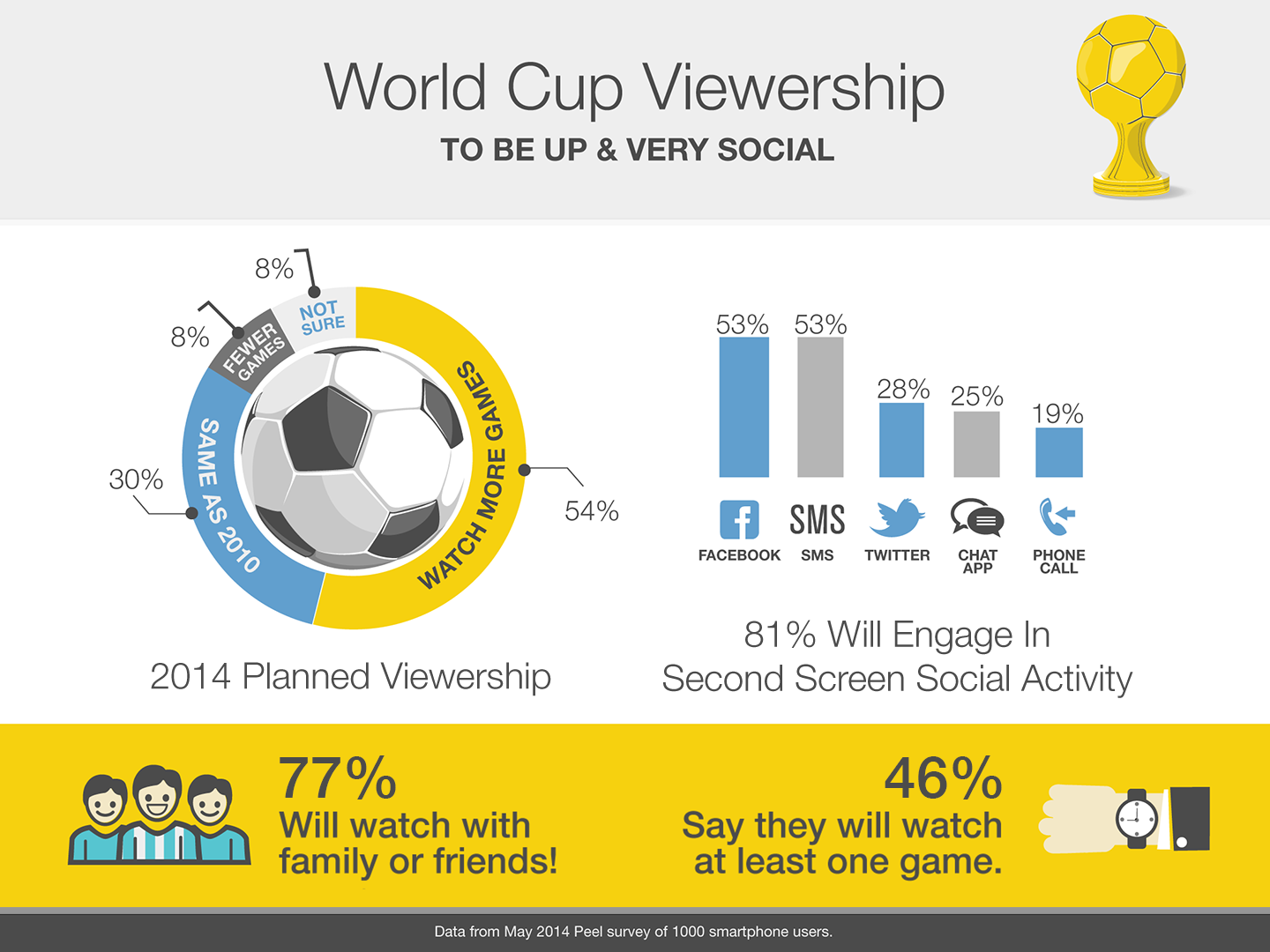Living in the digital age, it should come as no surprise to us that World Cup viewership this year is more mobile and social than ever before. But just how mobile and social? According to a study by Peel, an app that turns your smartphone or tablet into a smart remote, viewership of this year’s FIFA event is going to be very mobile and very social.
On Being Mobile
Peel surveyed 1080 smartphone users about their planned viewing and sharing habits for the games. Around half of the users said they planned to watch at least one match. 54% of users said they’d watch more of the Brazil games than the last World Cup’s games, 30% said the same number, and 8% said fewer (8% were not sure).
Interestingly, however, only 10% of viewers said they would watch games exclusively on their smartphones or computers, and 22% planned for a mix of online or mobile with TV. The majority of viewers were still planning to watch mostly on TV. Peel CEO and co-founder Thiru Arunachalam stated that
Despite the rise in streaming and companion device use, sports is still primarily a big screen viewing experience…Mobile adds a lot of value by making games more portable and social, but TV is still king.
On Being Social
Of those watching the World Cup, 77% said they would view the games alongside family or friends. Four or five people who were not going to watch with others still planned to communicate with them via a second screen device.
The top mechanisms for engaging with others were SMS texting and Facebook, each with 53% of people indicating they would communicate mostly through those means. 28% said they would use Twitter, which was just slightly higher than traditional phone calls, at 25%. 18% planned on other chat apps like Skype.
Women 54-65 years of age were more likely to communicate with people through mobile and social networks about the games. 50% of men in that age range said they would not interact with others during the games, compared to just 13% of women who would refrain, as well. The largest generational gap in social sharing was found with Twitter; 33% of viewers under 35 planned to use the social network, but only 12% of those over 55.
Over all, the study shows that this year’s World Cup in Brazil follows modern society’s trend toward being more mobile and social. As sports become more digitized, we see that technology, in fact, wins the title.








